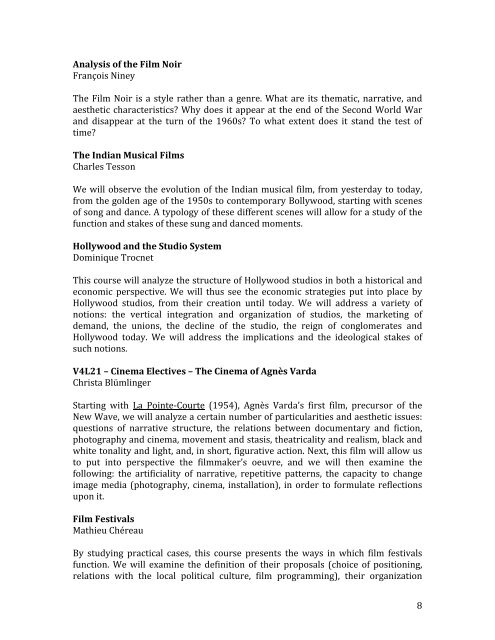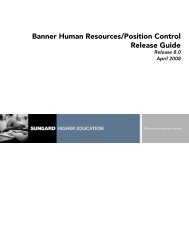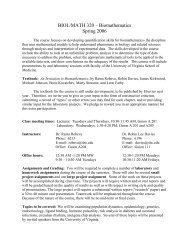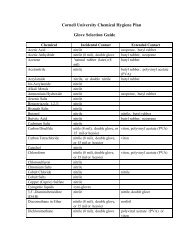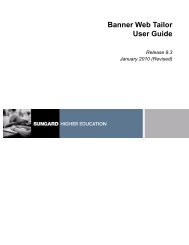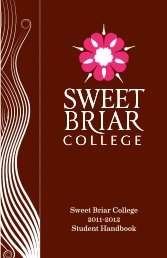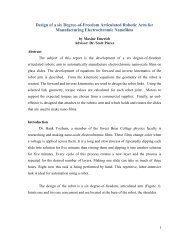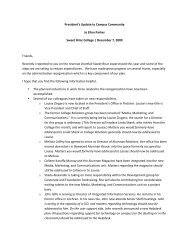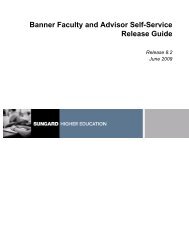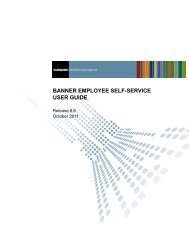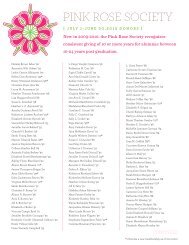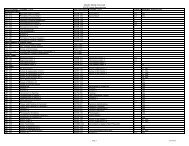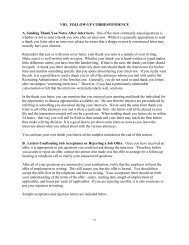Brochure - English translations of course offerings
Brochure - English translations of course offerings
Brochure - English translations of course offerings
Create successful ePaper yourself
Turn your PDF publications into a flip-book with our unique Google optimized e-Paper software.
Analysis <strong>of</strong> the Film Noir <br />
François Niney <br />
The Film Noir is a style rather than a genre. What are its thematic, narrative, and <br />
aesthetic characteristics? Why does it appear at the end <strong>of</strong> the Second World War <br />
and disappear at the turn <strong>of</strong> the 1960s? To what extent does it stand the test <strong>of</strong> <br />
time? <br />
The Indian Musical Films <br />
Charles Tesson <br />
We will observe the evolution <strong>of</strong> the Indian musical film, from yesterday to today, <br />
from the golden age <strong>of</strong> the 1950s to contemporary Bollywood, starting with scenes <br />
<strong>of</strong> song and dance. A typology <strong>of</strong> these different scenes will allow for a study <strong>of</strong> the <br />
function and stakes <strong>of</strong> these sung and danced moments. <br />
Hollywood and the Studio System <br />
Dominique Trocnet <br />
This <strong>course</strong> will analyze the structure <strong>of</strong> Hollywood studios in both a historical and <br />
economic perspective. We will thus see the economic strategies put into place by <br />
Hollywood studios, from their creation until today. We will address a variety <strong>of</strong> <br />
notions: the vertical integration and organization <strong>of</strong> studios, the marketing <strong>of</strong> <br />
demand, the unions, the decline <strong>of</strong> the studio, the reign <strong>of</strong> conglomerates and <br />
Hollywood today. We will address the implications and the ideological stakes <strong>of</strong> <br />
such notions. <br />
V4L21 – Cinema Electives – The Cinema <strong>of</strong> Agnès Varda <br />
Christa Blümlinger <br />
Starting with La Pointe-‐Courte (1954), Agnès Varda’s first film, precursor <strong>of</strong> the <br />
New Wave, we will analyze a certain number <strong>of</strong> particularities and aesthetic issues: <br />
questions <strong>of</strong> narrative structure, the relations between documentary and fiction, <br />
photography and cinema, movement and stasis, theatricality and realism, black and <br />
white tonality and light, and, in short, figurative action. Next, this film will allow us <br />
to put into perspective the filmmaker’s oeuvre, and we will then examine the <br />
following: the artificiality <strong>of</strong> narrative, repetitive patterns, the capacity to change <br />
image media (photography, cinema, installation), in order to formulate reflections <br />
upon it. <br />
Film Festivals <br />
Mathieu Chéreau <br />
By studying practical cases, this <strong>course</strong> presents the ways in which film festivals <br />
function. We will examine the definition <strong>of</strong> their proposals (choice <strong>of</strong> positioning, <br />
relations with the local political culture, film programming), their organization <br />
<br />
8


